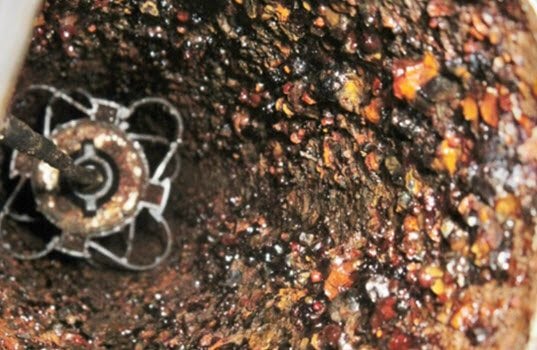As close as EPA got to a cause was the consistent presence of water content and particulate matter in the fuel tested from these tanks. We know that water is no friend of diesel—it is the essential element for microbes to develop and grow in the water-diesel interface—and that results in corrosion.
The water and particulate content, EPA concluded, is “the closest to being statistically significant predictive factors for metal corrosion, but causation cannot be discerned.”
What Can You Do about It?
So the experts can’t determine why, exactly, this is happening and even the most diligent of owner/operators could have a severe corrosion problem they aren’t even aware of. What is there to do to protect yourself?
You can take steps to monitor, and even prevent, this corrosion while industry experts continue to look for answers.
Here are some steps we recommend:
- Perform regular visual inspection inside the ATG or other riser pipes accessible from grade, looking for any sign of potential corrosion.
- Remove and inspect the ball float or flapper valve overfill prevention equipment—perhaps incorporated as part of a periodic inspection such as PEI RP900.
- The single biggest thing you can do is manage water. Do everything possible to keep water from entering the tank:
- Remove standing water, ice and/or snow around tank fill covers.
- Make sure all opening bungs, caps and cord grips are tight and replace caps or gaskets as needed.
- Keep fill and vapor recovery spill buckets clean. Pump out any water; clean out excess fuel and dirt. Don’t drain water into tanks!
- Change filters frequently, especially if slow-flow occurs, and look for signs of corrosion on the filter and housing.
- Pay close attention to leak detection equipment and call for immediate service if any leak alarms or conditions occur.
- Verify that tank vents have rain caps.
- Avoid prolonged periods of low tank volume to minimize tank water from condensation.
- Check tanks for water bottoms frequently, especially before and after deliveries.
- No detectable water is acceptable in your diesel tank. It should be removed as soon as possible. Removed water should be tested for microbes and, if detected, appropriate corrective action should be taken immediately.
When it comes to corrosion in a UST, if you can see it during a visual inspection, it’s most likely the tip of the iceberg. You almost surely have it elsewhere in your system. It’s important to know—and to address it as quickly as possible.
One of EPA’s recommendations is to perform an internal video inspection of your tank. Tanknology’s TankCam® remote visual tank inspection service, for example, can be used for this purpose, as it was for the EPA study. Such an inspection provides you with a clear picture of what’s happening inside your tank without having to empty it.
More recommendations can be found in the Preventive Maintenance Guide for Diesel Storage and Dispensing Systems, published by the Coordinating Research Council (CRC). We have posted this document, many more actual corrosion photos and more information about the issue of corrosion in diesel fueling systems on our website at Tanknology.com/DieselCorrosion.
 Brad Hoffman is Vice President of Engineering, Research & Development for Tanknology Inc. of Austin, Texas, the largest UST compliance services company in the world. Brad is a 28-year industry veteran, formerly an engineer and program manager for Exxon. He serves on a variety of PEI and API technical committees. Brad can be reached via email at [email protected].
Brad Hoffman is Vice President of Engineering, Research & Development for Tanknology Inc. of Austin, Texas, the largest UST compliance services company in the world. Brad is a 28-year industry veteran, formerly an engineer and program manager for Exxon. He serves on a variety of PEI and API technical committees. Brad can be reached via email at [email protected].









